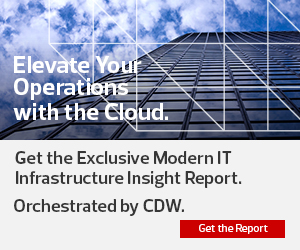Very few businesses these days don’t take advantage of the cloud. Most take a hybrid cloud approach, using both a public and private cloud, or a multicloud strategy that uses different public cloud services.
A virtual private cloud provides the benefits of public and private clouds in one solution.
What Is a Virtual Private Cloud?
A VPC is space offered by a public cloud provider, such as Google Cloud Platform or Microsoft Azure, that is dedicated to the consumer of the space and billed on a consumption basis. Businesses save because they pay only for the resources they use, and they get built-in elasticity and scalability because they can instantly acquire more space as needed. But they don’t have to share hardware, servers, storage and network devices with other cloud tenants, as they would with a public cloud.
Companies often reserve their internal or hosted private clouds for sensitive applications and data related to mission-critical business systems, or information that is subject to regulatory or compliance requirements. Their information lives behind their firewall, and access to these clouds comes through private and secure network links, rather than the public internet, as is the case with a public cloud. With every instance launched inside a public cloud being exposed to the internet, there’s a greater risk of attack.
MORE FROM BIZTECH: Digital transformation starts with the data center.
Companies, such as Google and Microsoft, that offer VPC services operate them on the same back-end infrastructures, but users don’t share their computing resources with others. Information stays within the company’s control rather than going over the open internet. End users’ data remains isolated from other users’ data, both in transit as well as inside the cloud provider’s network.
“IT still needs to maintain security policies and settings based on the policies that they define,” says Enterprise Strategy Group Senior Analyst Mark Bowker.
VPC networks can be customized; for instance, businesses can optimize the performance of certain applications by prioritizing those applications’ network traffic.
What Is VPC Peering?
Businesses can integrate their VPCs with public clouds and on-premises infrastructure. For example, when extending or enabling specific capabilities of Microsoft Azure Virtual Net (VNet), Azure can accommodate scenarios such as hybrid and dedicated connections between customers’ on-premises data centers with its ExpressRoute service. “Effectively, the VNet is the piping, plumbing and central network junction of your cloud infrastructure,” says company spokesperson.
VPC networks can share their computing resources with one another. VPC Peering is a network connection that allows two VPCs from the same platform provider to route IPv4 or IPv6 traffic between them. A VPC can have multiple peering connections.
IPV4 and IPV6 offer a logical connection between different network devices by providing identification — a unique IP address — for each device.
“It is a very common practice to have more than one VPC for redundancy and reliability, and very common for them to be connected so they can access resources from one another,” says Bowker.
It’s not necessarily the case that businesses will want to use VPCs from a single platform provider. “Businesses will consume from different clouds in order to leverage the strength of the provider,” Bowker says. ESG research shows that more than three-quarters of respondents consume from more than one cloud, though most of them note that the majority of their spending for cloud infrastructure services is with one provider.
451 Research notes that “cloud service providers each have their own unique dashboards and APIs. What users need is a unified view of their IT estates, with management and orchestration approaches that can optimize the use of venues and deliver developer services.”
The intersection of clouds should happen at the orchestration and management layer, explains Bowker. A consistent management experience across clouds is important. “The primary objective here has been to get the IT operations, information security and development teams speaking the same language and using a common tool across clouds,” says Bowker. One of the potential trends ESG is monitoring is the ability to migrate virtual machines to containers. “The additional layer of abstraction that containers provide have the potential to help IT operations manage infrastructure resources while developers can remain focused on building modern applications.”
Tools are appearing that can help users interact with the same structure of abstractions and the same semantics across all clouds. Some solutions promise that traversing networks, getting to subnets and managing routing tables can all take place using the same API resources, regardless of the underlying cloud. With some systems, cloud infrastructures can be automated using code that correctly maps to different cloud infrastructures, and the solutions maintain the mappings every time an underlying cloud API changes.
Virtual Private Clouds Are Gaining Traction with Businesses
The global VPC market is expected to grow from $20.9 billion in 2019 to $58.9 billion by 2024, reports ResearchandMarkets.
Just as the VPC is where users will consume server and storage capacity, modern cloud services can be — and often are — consumed within the VPC as well, says Bowker. “The simple opportunity is to migrate business workloads to a VPC for economic or security benefits while modernizing the workload with modern cloud services,” he says.











